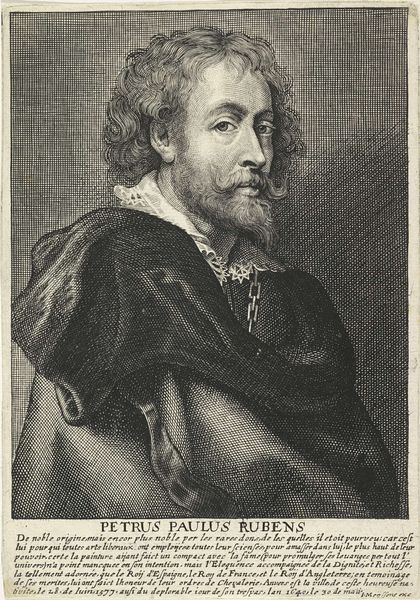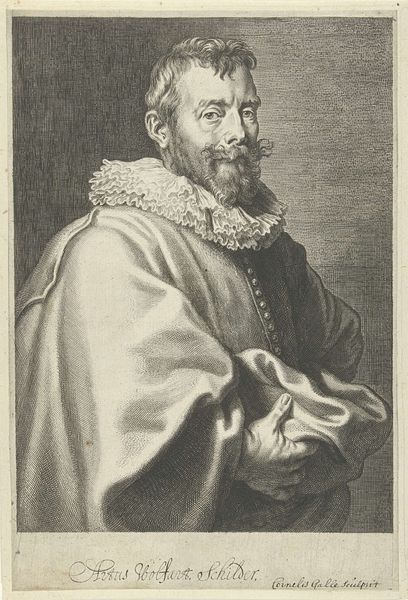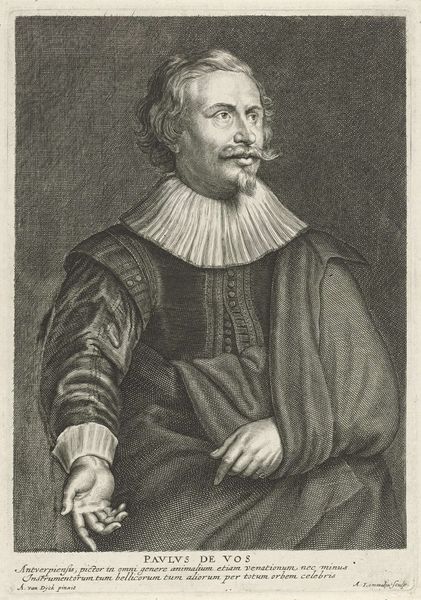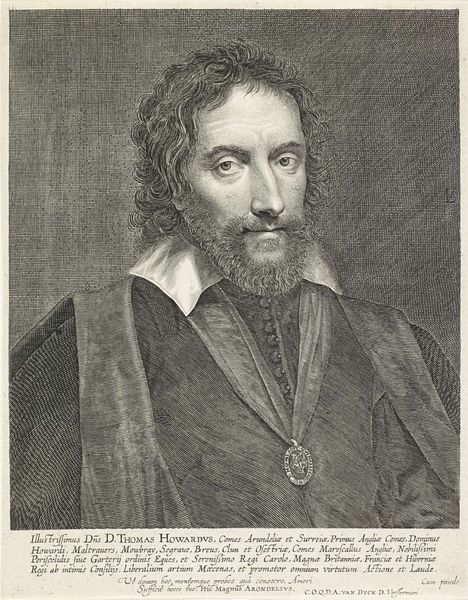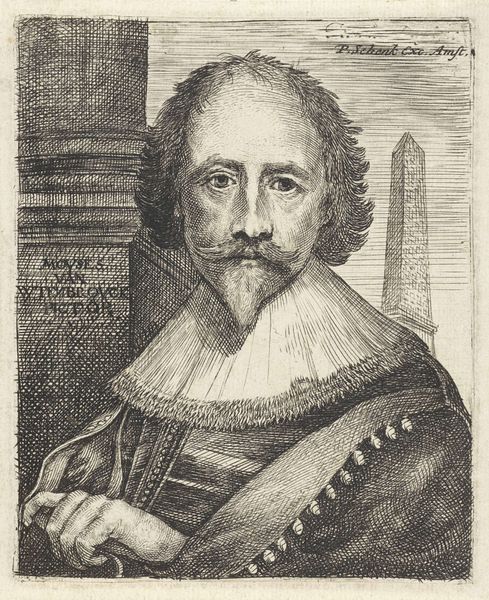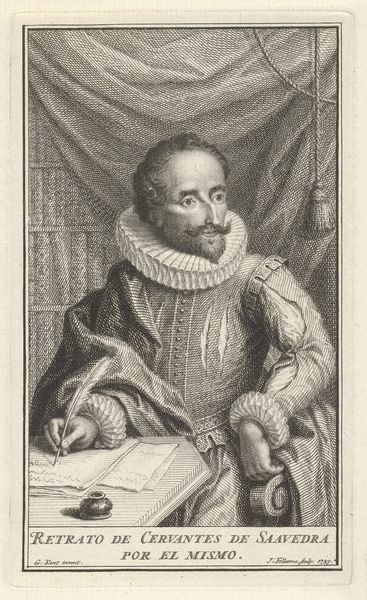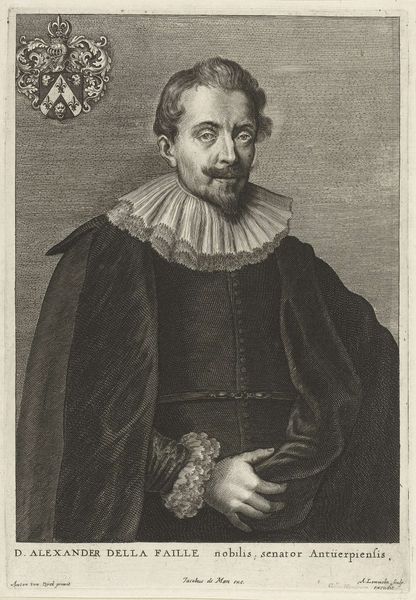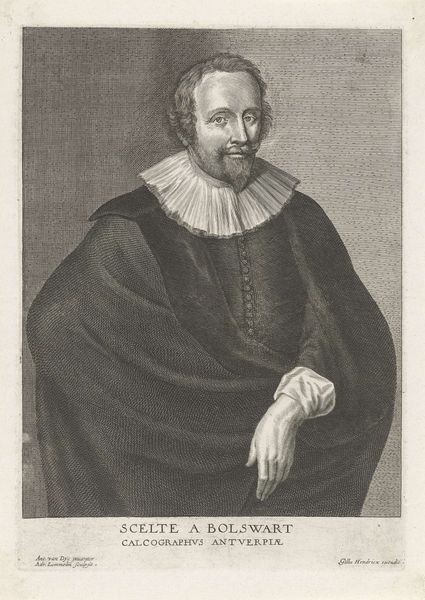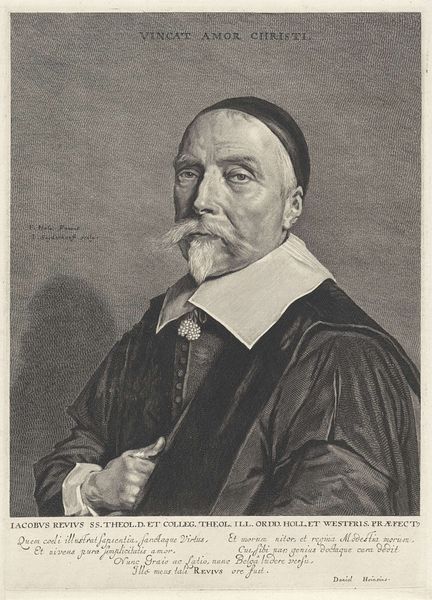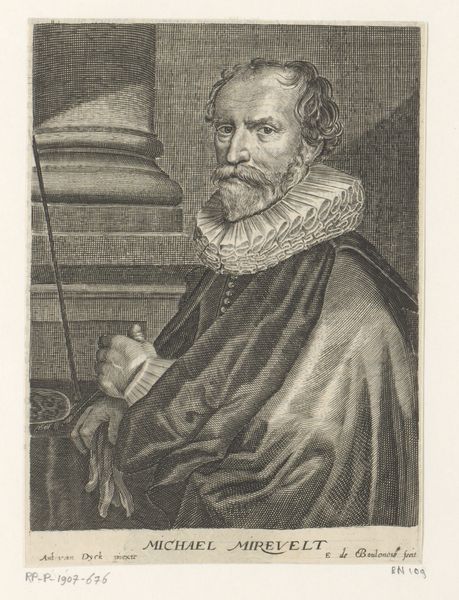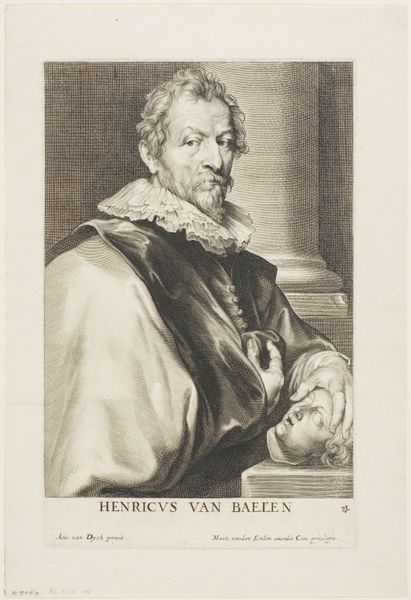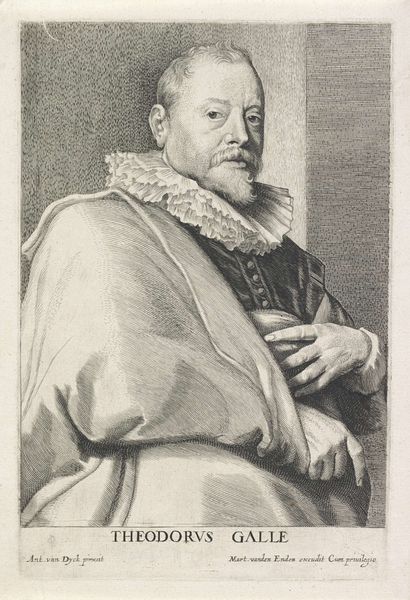
Portret van Jan van den Wouwer, raadsheer van aartshertog Albrecht van Oostenrijk before 1645
0:00
0:00
print, metal, engraving
#
portrait
#
baroque
# print
#
metal
#
old engraving style
#
charcoal drawing
#
portrait drawing
#
northern-renaissance
#
engraving
Dimensions: height 236 mm, width 156 mm
Copyright: Rijks Museum: Open Domain
Curator: Standing before us is a portrait etching of Jan van den Wouwer, a counselor to Archduke Albrecht of Austria. This particular impression comes from before 1645 and is attributed to Anthony van Dyck. It resides in the Rijksmuseum. Editor: He has this wonderfully severe yet knowing gaze, doesn't he? The sharp contrast gives a kind of gravity. Almost as if you were face to face. Curator: The engraving’s power definitely stems from van Dyck's skill in capturing the texture and weight of societal role. Notice the painstaking rendering of his fur-trimmed coat and elaborate collar. The materiality of these garments speaks volumes about van den Wouwer’s position and affluence. Editor: Absolutely, that fur is magnificent. It’s opulent, but look how van Dyck turned print into almost plush tactility. It invites you to imagine the touch, which is wild when we’re viewing it hundreds of years removed. There's also something almost theatrical in his presentation, right? A certain dramatization of power and status through clothing and pose. Curator: That is very intentional, this form of portraiture wasn't simply about creating a likeness; it functioned as a mode of constructing and perpetuating social hierarchies. Consider the labor involved in producing prints like this – from the initial drawing to the etching and printing process. The resulting images served to solidify and disseminate the sitter’s authority. Editor: I'm drawn to the way van Dyck implies texture and weight to the materials – the slick shine of his cloak alongside the density of his beard. To accomplish such a realistic quality, with mere lines on metal plates… it's astonishing, isn't it? Almost feels like the print, this seemingly flat, reproductive medium, takes on this kind of unique aura. Curator: Precisely, and the mass production of prints meant that van den Wouwer's image, and thus his influence, could extend far beyond his immediate circle, impacting the wider social and political sphere. The act of making and distributing these prints reinforces the network of power in which he was embedded. Editor: What lingers with me is the paradox inherent to it all. A unique, irreplaceable human is portrayed by reproducible, printed materials, something anyone with the funds and right connections might possess. In a way, that feels inherently melancholy, you know? Curator: A final thought, as it pertains to Van Dyck, he and other Northern-Renaissance masters before him set a standard for commercial artistic ventures, wherein dissemination of power was equally, if not more important than artistic genius. Editor: Leaving us with the question of legacy – what remains of Jan van den Wouwer besides this multiplied image and its lingering impression through time?
Comments
No comments
Be the first to comment and join the conversation on the ultimate creative platform.
